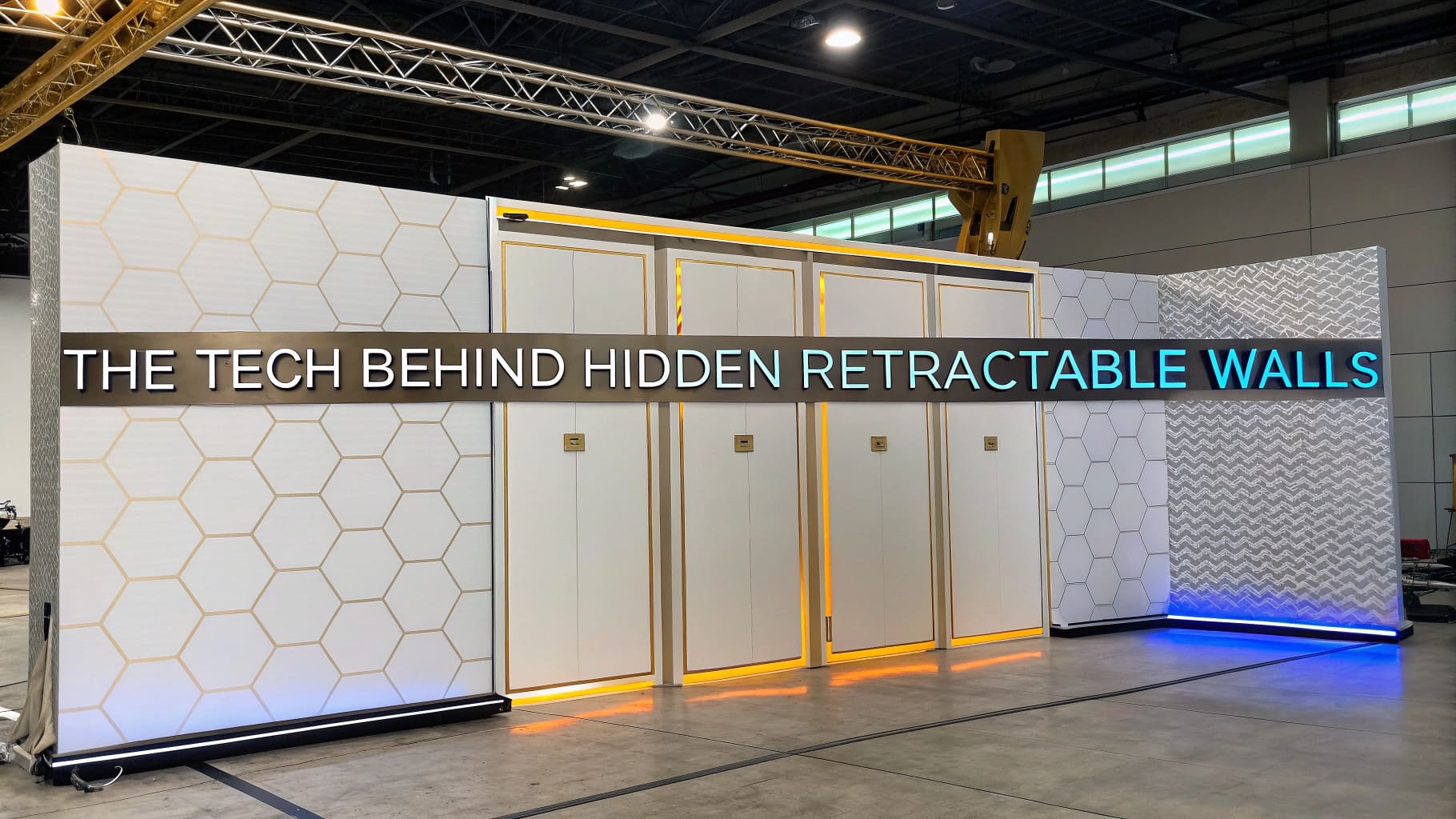Hidden retractable walls represent a fascinating intersection of architecture, design, and functionality. These innovative structures allow for the seamless transformation of spaces, enabling environments to adapt to various needs and activities. The concept of retractable walls is not entirely new; however, advancements in technology and materials have significantly enhanced their practicality and aesthetic appeal.
In contemporary architecture, these walls are increasingly being utilized in residential, commercial, and public spaces, offering a versatile solution for maximizing usable area while maintaining an elegant appearance. The allure of hidden retractable walls lies in their ability to create flexible environments. For instance, a large open space can be divided into smaller, more intimate areas for meetings or gatherings, only to be reconfigured back into a single expansive area when needed.
This adaptability is particularly valuable in urban settings where space is at a premium. As cities continue to grow and evolve, the demand for multifunctional spaces that can accommodate various activities without the need for permanent structural changes becomes ever more pressing. Hidden retractable walls provide a practical answer to this challenge, allowing architects and designers to push the boundaries of traditional space usage.
The Mechanics of Retractable Wall Systems
Core Components
At their core, these systems typically consist of panels that can be moved along tracks or hinges, allowing them to slide or fold away when not in use. The most common types of mechanisms include sliding systems, folding systems, and pivoting systems.
Types of Mechanisms
Each type has its own advantages and is suited for different applications depending on the desired functionality and aesthetic. Sliding systems are perhaps the most prevalent in modern designs. They often utilize a track system mounted on the ceiling or floor, allowing panels to glide smoothly into hidden compartments or alongside adjacent walls.
Design Advantages
This mechanism is particularly effective in spaces where a clean, unobtrusive look is desired. Folding systems, on the other hand, involve panels that fold back on themselves, similar to an accordion. This design can be advantageous in situations where space constraints limit the amount of room available for panels to slide. Pivoting systems allow walls to rotate around a fixed point, providing a unique way to create dynamic spaces that can be easily reconfigured.
Smart Technology Integration in Retractable Walls
As technology continues to advance, the integration of smart features into retractable wall systems has become increasingly common. These innovations enhance the functionality of retractable walls, making them not only more user-friendly but also more efficient. Smart technology can include automated controls that allow users to operate the walls with the touch of a button or even through voice commands.
This level of convenience is particularly appealing in commercial settings where quick transitions between different configurations are often necessary. Moreover, smart retractable walls can be equipped with sensors that detect occupancy or environmental conditions. For example, in a conference room setting, a wall could automatically retract when it senses that the room is empty or adjust its position based on the number of people present.
This integration of technology not only streamlines operations but also contributes to energy efficiency by optimizing heating and cooling based on room usage. Additionally, some systems can be integrated with building management systems (BMS), allowing for centralized control over multiple retractable walls throughout a facility.
Materials and Design Considerations for Hidden Retractable Walls
The choice of materials for hidden retractable walls plays a crucial role in their functionality and aesthetic appeal. Common materials include wood, glass, metal, and composite materials, each offering distinct advantages and challenges. Wood provides warmth and a classic aesthetic but may require more maintenance over time compared to metal or glass options.
Glass walls can create an illusion of space and light but may necessitate additional considerations regarding privacy and sound insulation. Design considerations extend beyond material selection; they also encompass the overall architectural vision for the space. For instance, when designing a hidden retractable wall for a modern office environment, one might prioritize sleek lines and minimalistic hardware to maintain an uncluttered look.
Conversely, in a residential setting, a more decorative approach might be taken, incorporating intricate woodwork or custom finishes that complement the home’s interior design. Acoustic performance is another critical factor when selecting materials for retractable walls. In environments where sound control is essential—such as recording studios or conference rooms—specialized acoustic panels may be integrated into the wall design to minimize sound transmission between spaces.
This consideration ensures that while spaces can be reconfigured for different uses, they still maintain their intended acoustic properties.
Safety Features and Regulations for Retractable Walls
Safety is paramount when it comes to the design and installation of retractable wall systems. Various regulations govern their construction and use, particularly in commercial settings where public safety is a concern. Building codes often dictate specific requirements regarding structural integrity, fire safety, and accessibility.
For instance, retractable walls must be designed to withstand certain loads and forces to ensure they do not pose a risk during operation. In addition to adhering to building codes, manufacturers often incorporate safety features into their designs. These may include emergency stop buttons that allow users to halt operation immediately if an obstruction is detected during movement.
Furthermore, many modern systems are equipped with sensors that prevent the wall from closing if an object or person is in its path, significantly reducing the risk of accidents. Regular maintenance and inspections are also critical components of ensuring safety in retractable wall systems. Building managers should establish protocols for routine checks to ensure that all mechanical components are functioning correctly and that safety features are operational.
By prioritizing safety through thoughtful design and adherence to regulations, architects and builders can create retractable wall systems that enhance functionality without compromising user well-being.
The Future of Hidden Retractable Wall Technology
The future of hidden retractable wall technology appears promising as innovations continue to emerge at a rapid pace. One significant trend is the increasing use of sustainable materials in the construction of these systems. As environmental concerns become more pressing, architects and manufacturers are exploring eco-friendly options that reduce carbon footprints while maintaining high performance standards.
This shift not only aligns with global sustainability goals but also appeals to consumers who prioritize environmentally responsible choices. Another exciting development is the potential for enhanced automation through artificial intelligence (AI) and machine learning algorithms. These technologies could enable retractable walls to learn user preferences over time, optimizing their operation based on patterns of use.
For example, in a multi-purpose space that hosts various events throughout the week, AI could analyze historical data to determine the most efficient configurations for different activities, automatically adjusting the walls accordingly. Moreover, as smart home technology continues to evolve, we may see greater integration between retractable walls and other smart devices within residential settings. Imagine a scenario where your home’s lighting, heating, and retractable walls all work in harmony to create the perfect ambiance for entertaining guests or enjoying a quiet evening at home.
This level of interconnectedness could redefine how we interact with our living spaces.
Case Studies: Innovative Applications of Retractable Walls
Numerous case studies illustrate the innovative applications of hidden retractable walls across various sectors. One notable example is the use of retractable walls in educational institutions. Schools are increasingly adopting flexible classroom designs that allow for easy reconfiguration based on teaching methods or class sizes.
A prominent university implemented a system of retractable walls in its lecture halls, enabling instructors to transform large auditoriums into smaller seminar rooms with ease. This adaptability not only enhances the learning experience but also maximizes the use of available space. In the hospitality industry, hotels have begun incorporating retractable walls into their event spaces to accommodate diverse functions ranging from weddings to corporate meetings.
A luxury hotel chain recently installed a series of glass retractable walls in its ballroom area, allowing for breathtaking views of the surrounding landscape while providing flexibility in room size. When fully opened, these walls create an expansive indoor-outdoor space that enhances guest experiences during events. Additionally, residential applications have seen remarkable creativity with hidden retractable walls.
In urban apartments where space is limited, homeowners have embraced these systems to create multifunctional living areas that can easily transition from cozy lounges to spacious entertainment zones. One innovative design featured a hidden wall that concealed a Murphy bed; when guests arrived, the wall retracted seamlessly to reveal additional sleeping space without sacrificing style or comfort.
Benefits and Considerations for Implementing Hidden Retractable Walls
Implementing hidden retractable walls offers numerous benefits that extend beyond mere aesthetics or space-saving capabilities. One significant advantage is increased flexibility in how spaces are utilized. In commercial settings such as offices or conference centers, this flexibility allows organizations to adapt quickly to changing needs without incurring significant renovation costs or downtime.
Moreover, hidden retractable walls can enhance collaboration by creating environments conducive to teamwork and communication. In open-plan offices where collaboration is key, these walls can be used to create temporary meeting spaces that foster creativity while still allowing for an open atmosphere when needed. However, there are considerations that must be taken into account when implementing these systems.
Initial costs can be higher than traditional wall construction due to the complexity of mechanisms and materials involved. Additionally, ongoing maintenance requirements should be factored into long-term planning; regular inspections and servicing are essential to ensure optimal performance over time. Furthermore, it’s crucial to engage with experienced professionals during both the design and installation phases to ensure compliance with safety regulations and building codes.
By carefully weighing these benefits against potential challenges, architects and builders can make informed decisions about incorporating hidden retractable walls into their projects. In summary, hidden retractable walls represent an exciting frontier in architectural design and functionality. Their ability to transform spaces dynamically while integrating advanced technology positions them as valuable assets in both residential and commercial environments.
FAQs
What are hidden retractable walls?
Hidden retractable walls are a type of architectural feature that allows for a wall to be concealed when not in use, and then extended or retracted as needed.
What technology is used to create hidden retractable walls?
Hidden retractable walls often use a combination of mechanical, electrical, and sometimes hydraulic systems to allow for smooth and seamless movement.
What are the benefits of hidden retractable walls?
Hidden retractable walls can provide flexibility in space utilization, allowing for open floor plans when desired and privacy or division of space when needed. They can also add a modern and sleek aesthetic to a space.
Are hidden retractable walls suitable for residential and commercial spaces?
Yes, hidden retractable walls can be used in both residential and commercial spaces. They are often used in homes, offices, restaurants, and other venues where flexible space utilization is desired.
What are some considerations when installing hidden retractable walls?
When installing hidden retractable walls, it’s important to consider the structural support needed, the electrical and mechanical requirements, and any safety features that may be necessary for the specific application. Additionally, proper maintenance and regular inspections are important to ensure the walls function properly.

